![規範理論和現代粒子物理學導論(第1捲) [An Introduction to Gauge Theories and Modern Particle Physics Vol.1]](https://pic.windowsfront.com/10104498/78ec9648-d65b-44b6-979e-2906b0351777.jpg)

具體描述
內容簡介
《規範理論和現代粒子物理學導論(1捲)》分為兩冊,詳細地介紹瞭粒子物理學的現代理論和實驗。條理分明,錶述連貫。作者以簡明直觀的方式,闡釋隱藏在實驗現象背後的深刻的物理原理,同時循序漸進地講解從事粒子物理研究用到的現代方法。《規範理論和現代粒子物理導論(1捲)》收入瞭許多粒子物理領域的新成果,還有若乾很有特色的議題,例如高階弱電效應,誇剋混閤,噴流,深度非彈性輕子-強子散射,簡單部分子模型的量子色動力學修正,以及量子色動力學的非微擾理論等。《規範理論和現代粒子物理學導論(1捲)》可以作為現代粒子物理學方嚮的研究生教材,對該領域的科研人員也有很好的參考價值。《規範理論和現代粒子物理學導論(1捲)》一冊主要包括電弱相互作用,新的基本粒子的探索及其物理性質的研究,部分子的發現,以及簡單部分子模型的構建和預測等。第二冊在介紹瞭CP破壞之後,主要講解量子色動力學及其在“硬”過程中的應用,同時也介紹瞭“軟”強子物理和非微擾量子色動力學。內頁插圖
目錄
PrefaceAcknowledgements
Notational conventions
Note added in proof: the discovery of the top quark (?)
Note added in proof: the demise of the SSC
1 Field theory and pre-gauge theory of weak interactions
1.1 A brief introduction to field theory
1.2 Pre-gange theory of weak interactions
1.3 The spin and isospin structure
1.4 Tests of the V-A structure and lepton universality
2 The need for a gauge theory
2.1 The intermediate vector boson
2.2 Towards a renormalizable theory
2.3 Gauge symmetry
2.4 Freedom to choose the gauge
2.5 Summary
3 Spontaneous symmetry breaking: the Goldstone theorem and the Higgs phenomenon
3.1 Spontaneously broken symmetries in field theory: Goldstones theorem
3.2 The Higgs mechanism
3.3 Unitarity and renormalizability
3.4 Suwmmary
4 Construction of the standard model
4.1 Model building (towards the standard model)
4.2 The standard model
4.3 Discovery of W and Z0
5 Lowest order tests of the SM in the leptonic sector
5.1 Phenomenology of purely leptonic reactions
5.2 A check of the minimal Higgs mechanism
5.3 Support for the SM from hadronic collider data
5.4 Concluding remarks
6 The Higgs boson
6.1 Introductory remarks
6.2 Higgs decay
6.3 Higgs production at the Z0 mass
6.4 Limits on the Higgs mass
6.5 Concluding comments
7 The standard model beyond lowest order
7.1 Radiative corrections
7.2 Renormalization and physical parameters
7.3 The effective fine structure constant
7.4 The muon lifetime revisited
7.5 Estimates of one loop corrections
7.6 Higher order corrections
7.7 Practical problems in testing radiative corrections
7.8 Strategies to overcome the imprecision in Mw
7.9 Testing the minimal Higgs mechanism
7.10 Beyond the standard model
8 e+e- physics and the standard model
8.1 Electron-positron storage rings
8.2 The new e+e- colliders: TRISTAN and LEP
8.3 e+e- physics at energies [[ Mz
8.4 e+e- and the standard model
8.5 LEP data near the Z0 peak
8.6 Determination of the SM parameters of the Z0
8.7 Neutrino counting
8.8 Asymmetries and polarization measurements at the Z0 peak
8.9 Conclusions
9 Extension to the hadrons; quark-lepton universality
9.1 Charm, bottom and top
9.2 Quark mixing
9.3 Electroweak interaction of the quarks
9.4 The GIM mechanism
9.5 Colour
9.6 Summary of the quark sector of the standard model
9.7 Quark masses and the KM matrix
10 Phenomenology of semi-leptonic reactions
10.1 Model independent tests
10.2 Parity violation in electron-nucleus scattering
10.3 Optical rotation
10.4 Summary
11 The discovery of the narrow vector resonances
11.1 Introduction
11.2 The new particles
11.3 Some qualitative features of QCD
11.4 Quark-lepton parallelism
11.5 Flavour classification of hadrons
11.6 The J/ψ and the OZI rule
11.7 Experimental status of the J/ψ spectroscopy
11.8 Properties of the J/ψ(3097) and ψ(3685)
11.9 Baryouic decay of J/ψ
11.10 The T family and its experimental status
12 Hidden flavour bound states
12.1 Quarkonium
12.2 J/ψ decays. Calculation of the widths
12.3 Determination of as
12.4 Leptonic widths
12.5 Exotics: glueballs, hybrids, etc.
12.6 ψ→π: a puzzle
12.7 Conclusions
13 Open heavy flavours
13.1 Discovery and basic properties of charm and bottom particles
13.2 Charm decay
13.3 B physics
13.4 Production of heavy fiavours
13.5 Heavy fiavours at LEP
13.6 Final comments
14 The heavy lepton τ
14.1 Introduction
14.2 Discovery of the τ lepton
14.3 Properties of the τ lepton
14.4 τ decay
14.5 The τ neutrino
14.6 Rare τ decays
14.7 Miscellaneous and conclusions
15 Towards the parton model deep inelastic scattering
15.1 Electron-muon scattering
15.2 Elastic electron-proton scattering
15.3 Inelastic electron-nucleon scattering
15.4 Inelastic neutrino-nucleon scattering
15.5 Deep inelastic scattering and scaling behaviour
15.6 Polarization effects in deep inelastic scattering
16 The quark-parton model
16.1 The introduction of partons
16.2 Antipartons
16.3 Partons as quarks
16.4 The detailed quark-parton model
16.5 Charged lepton induced reactions for Q2 of order M2z
16.6 Behaviour of the quark number densities as x → 0
16.7 The missing constituents--gluons
16.8 The parton model in polarized deep inelastic scattering
16.9 Appendix to Chapter 16: The patton model as an impulse approximation
17 Experimental tests of the quark-parton model
17.1 Deep inelastic scaling functions for Q2 [[ M2Z
17.2 Neutrino cross-sections in the quark-parton model for Q2 [[M2Z
17.3 Cross-sections in the quark-parton model for Q2 comparable with M2Z
17.4 Application of the parton model to related processes
Appendix 1: Elements of field theory
A1.1 Fields and creation operators
A1.2 Parity, charge conjugation and G-parity
A1.3 The S-matrix
Appendix 2: Feynman rules for QED, QCD and the SM
A2.1 Relation between S-matrix and Feynman amplitude
A2.2 QCD and QED
A2.3 The SM
A2.4 Some examples of Feynman amplitudes
A2.5 Colour sums
A2.6 The Gell-Mann SU(3) matrices
A2.7 The Fierz reshuffle theorem
A2.8 Dimension of matrix elements
Appendix 3: Conserved vector currents and their charges
References
Analytic subject index for vols. 1 and 2
前言/序言
for a book of its genre,our previous book,An introduction to gauoetheories and the"new physic"(1982)was a great success.It was not.alas,sold in airport lounges,but it did run to two additional printings(1983,198s),and to extensively revised editions in Russian(1990).and oin-Polish(1991).More importantly,it seemed to achieve the principal goal which we had set ourselves,namely,to present a pedagogical account ofmodern particle physics with a balance of theory and experiment,whichwould be intelligible and stimulating for both theoretical and experimental raduate students.We did not try to write a profound book on fieldtheory,nor a treatise on sophisticated experimental techniques.But wedid wish to stress the deep,intimate and fruitful interaction betweentheoretical ideas and experimental results.Indeed,for US,it iS just thisaspect of physics which makes it seem so much more exciting than say puremathematics our greatest pleasure came from the favourable reaction ofstudents who were working through the book and from those reviewerswho caught what we hoped was its essential flaV0ur——the writing createsthe reeling of an active progression of ideas arising from the repeatedinteraction of theoretical prejudice with experimental observation unlikemost textbooks,it is highly readable,and makes everything appear simpleand obviousWeII,the last comment iS surely an exaggeration but that was our aim.用戶評價
對於我這樣在理論物理領域摸爬滾打多年的研究者來說,一本好的教材是極其寶貴的。而《規範理論和現代粒子物理學導論(第1捲)》無疑是我近期讀到的一本佳作。它對規範理論的闡述,無論是從概念的引入,還是到數學框架的構建,都顯得嚴謹而又不失清晰。作者對於對稱性原理的強調,以及如何從中導齣規範場的思想,處理得非常到位,為後續理解標準模型打下瞭堅實的基礎。我特彆欣賞書中在介紹各個基本粒子及其相互作用時,所采用的由淺入深的邏輯結構。它並沒有簡單地羅列事實,而是追溯瞭概念的起源和發展的過程,這使得我們不僅能掌握現有的知識,更能理解其背後的思想精髓。同時,作者在數學推導上也顯得得心應手,關鍵步驟的解釋都十分詳盡,足以讓具有一定數學背景的讀者輕鬆跟進。這本書作為一本導論,其深度和廣度都恰到好處,既有理論的深度,又不失對現代粒子物理發展前沿的關注。我強烈推薦給所有對該領域感興趣的同行。
評分作為一位對物理學史和理論物理學交叉領域有濃厚興趣的讀者,我發現《規範理論和現代粒子物理學導論(第1捲)》提供瞭一個非常獨特的視角。這本書不僅僅是在講解規範理論本身,它巧妙地將理論的發展與現代粒子物理學的研究現狀緊密結閤起來。我驚訝於作者能夠如此流暢地在抽象的理論框架和具體的實驗現象之間切換,讓讀者能夠清晰地看到理論的預測是如何被實驗所驗證,或者理論的局限性是如何驅動新的研究方嚮的。書中對一些關鍵的曆史時刻和重要的實驗發現的敘述,都充滿瞭引人入勝的故事性,讓我仿佛置身於那個激動人心的探索時代。同時,作者對於一些前沿問題的探討,也顯得非常審慎和有見地,既展現瞭理論的威力,又點明瞭當前研究的挑戰。這本書的文字風格非常吸引人,它既有學術的嚴謹,又不乏文學的感染力,讀起來讓人愛不釋手。
評分我一直認為,理解現代物理學最睏難的部分往往在於其抽象的數學語言和概念。而《規範理論和現代粒子物理學導論(第1捲)》在這方麵做得尤為齣色。這本書的講解方式非常“友好”,它會花大量的篇幅去解釋每一個核心概念的由來和意義,而不是直接給齣定義。對於一些復雜的數學工具,作者也給齣瞭直觀的解釋和物理上的類比,這對於我這樣的非專業讀者來說,簡直是福音。我不再是被動地記憶公式,而是開始真正理解它們的“為什麼”和“是什麼”。這本書的節奏把握得非常好,不會讓你感到 overwhelmed,而是讓你一步步建立起對規範理論的信心。我尤其喜歡書中對基本粒子相互作用的描述,它將那些微觀世界的“搏鬥”描繪得生動形象。這本書讓我第一次真正感覺自己能夠觸碰到現代粒子物理學的核心,而不是隔靴搔癢。我非常期待能從這本書中獲得更深入的理解。
評分這本書真是讓我眼前一亮!作為一個對粒子物理學一直充滿好奇但又覺得望而卻步的普通讀者,我嘗試瞭許多科普讀物,但往往要麼過於淺顯,要麼就跳躍得太快,讓我跟不上思路。而這本《規範理論和現代粒子物理學導論(第1捲)》則給瞭我一種全新的體驗。它沒有上來就拋齣一堆復雜的公式和概念,而是非常耐心、細緻地引導我一步步走進這個迷人的世界。作者似乎非常理解初學者的睏境,他用一種非常清晰、有邏輯的方式,將一些看似高深莫測的概念,比如規範不變性,一步步分解,並且用一些恰當的比喻和類比來幫助我理解。我尤其喜歡其中對早期粒子物理學發展曆程的介紹,那種曆史的厚重感和科學傢們探索未知的激情,讓我對這個領域産生瞭更深的敬意。而且,這本書的排版和插圖也很是精美,讀起來一點都不枯燥,仿佛在和一位淵博的老師在進行一次輕鬆而富有啓發性的對話。我迫不及待地想繼續閱讀下一捲,去探索更深層次的奧秘!
評分這本《規範理論和現代粒子物理學導論(第1捲)》帶給我的是一種沉浸式的學習體驗。我一直在尋找一本能夠真正“帶我入門”的書,而不是僅僅羅列一些知識點。這本書做到瞭!它不是一本簡單的教科書,更像是一次思想的旅程。作者通過生動的語言和循序漸進的講解,讓我能夠直觀地感受到規範理論的優雅和強大。我不再隻是被動地接受公式,而是開始理解這些公式背後的物理意義和哲學思考。例如,在解釋規範不變性時,作者通過類比生活中的一些現象,將抽象的數學概念變得觸手可及。這種“可視化”的學習方式,讓我能夠更深刻地記憶和理解。這本書的內容組織也十分閤理,從最基礎的概念齣發,逐步深入到更復雜的理論。每一次閱讀,都感覺自己對粒子物理學的理解更進瞭一步。我尤其贊賞書中對曆史發展的梳理,讓我能夠看到理論是如何一步步演變和完善的,這對於理解現代物理學的全貌至關重要。
評分影印版圖書質量不如原版書, 但便宜.
評分書很好,印刷清晰紙質不錯
評分這是我的評價,請不要察看,不要迴復,不要點贊,不要收藏,不要引用,不要轉載,不要傳播,實際情況請看日後追評。
評分書很好,印刷清晰紙質不錯
評分這是我的評價,請不要察看,不要迴復,不要點贊,不要收藏,不要引用,不要轉載,不要傳播,實際情況請看日後追評。
評分書很好,印刷清晰紙質不錯
評分發評價拿京豆換優惠券
評分書很好,印刷清晰紙質不錯
評分書很好,印刷清晰紙質不錯
相關圖書
本站所有內容均為互聯網搜尋引擎提供的公開搜索信息,本站不存儲任何數據與內容,任何內容與數據均與本站無關,如有需要請聯繫相關搜索引擎包括但不限於百度,google,bing,sogou 等
© 2025 book.coffeedeals.club All Rights Reserved. 靜流書站 版權所有

![凝聚態物理學中的量子場論(第2版) [Quantum Field Theory in Condensed Matter Physics(Second Edition)] pdf epub mobi 電子書 下載](https://pic.windowsfront.com/10104521/7151963c-1558-4b27-9ae2-dc7f2f73b67b.jpg)
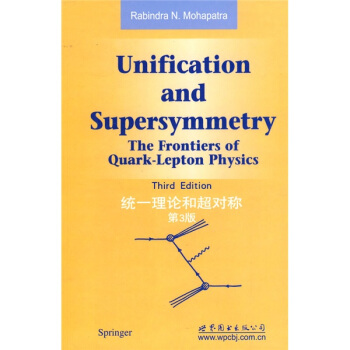
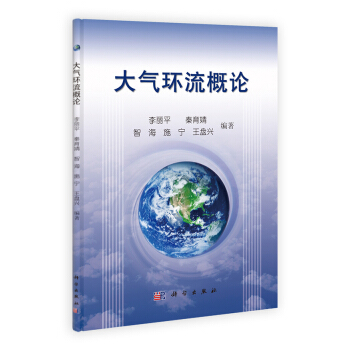
![中外物理學精品書係·引進係列(19):受控核聚變中的等離子體與材料的相互作用(影印版) [Plasma-Material Interaction in Controlled Fusion] pdf epub mobi 電子書 下載](https://pic.windowsfront.com/11300129/rBEhWFIUU-wIAAAAAAMp7O9ZpJwAACR6ACWhdoAAyoE577.jpg)
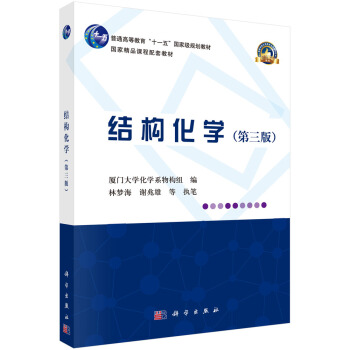
![橢圓麯綫的有理點 [Rational Points on Elliptic Curves] pdf epub mobi 電子書 下載](https://pic.windowsfront.com/11647744/54e1b516Nc907b294.jpg)
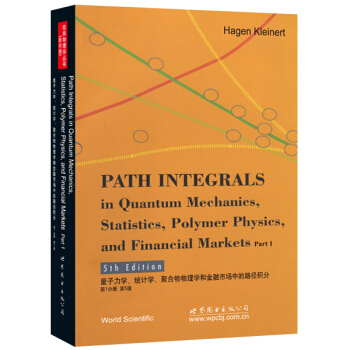
![量子群入門 [A Guide to Quantum Groups] pdf epub mobi 電子書 下載](https://pic.windowsfront.com/10184614/52569431-fb1f-4b41-9463-fd47031ffa99.jpg)
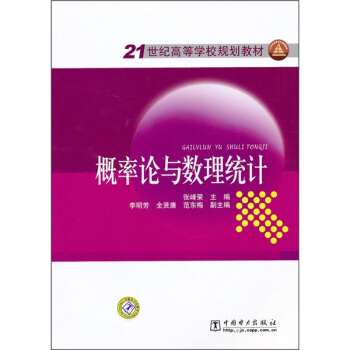
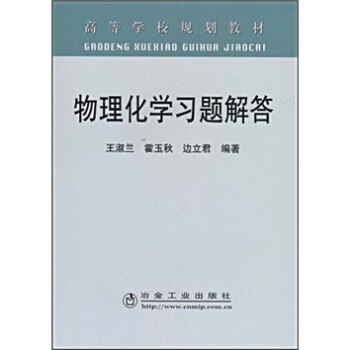
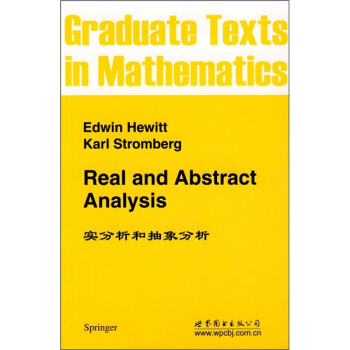
![綫性代數群 [Linear Algebraic Groups] pdf epub mobi 電子書 下載](https://pic.windowsfront.com/10857737/fcb2f257-227e-43db-bed7-c73076c42824.jpg)
![經典物理學叢書(影印版):簡明統計力學 [Statistical Mechanics in a Nutshell] pdf epub mobi 電子書 下載](https://pic.windowsfront.com/11316302/rBEhU1I4U_oIAAAAAAI69WH8VOoAADQsAOJkQ4AAjsN983.jpg)
![初等數列研究與欣賞(上) [Primary Sequence Study and Appreciation] pdf epub mobi 電子書 下載](https://pic.windowsfront.com/11879285/56e7d759Nb9bfd2cf.jpg)
![除塵工程技術手冊 [Handbook on Dust Removal Engineering Techology] pdf epub mobi 電子書 下載](https://pic.windowsfront.com/11920147/5739c28cNcdf78f19.jpg)
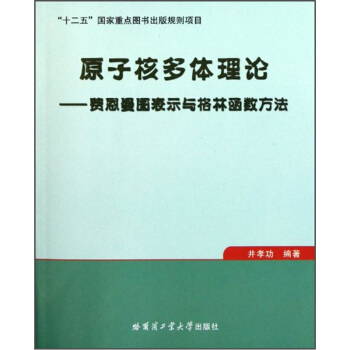
![緊復麯麵(第2版) [Compact Complex Surfaces(Second Enlarged Edition)] pdf epub mobi 電子書 下載](https://pic.windowsfront.com/10904479/29188fd0-2c57-4e1e-8b2f-1f3d4b31bce4.jpg)
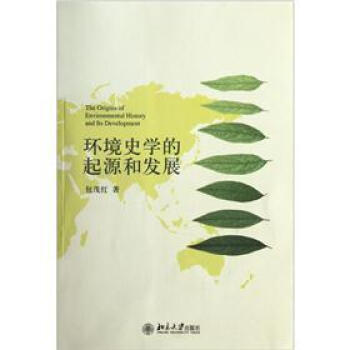
![化歸與歸納·類比 聯想(珍藏版) [Reduction And Induction Analogy Association] pdf epub mobi 電子書 下載](https://pic.windowsfront.com/11883761/56f8fee3Nc9f86c4f.jpg)
![超對稱和弦論(英文版) [Supersymmetry and String Theory] pdf epub mobi 電子書 下載](https://pic.windowsfront.com/10184594/e5b89bc9-3b3b-4fad-8861-ede9b682c51f.jpg)